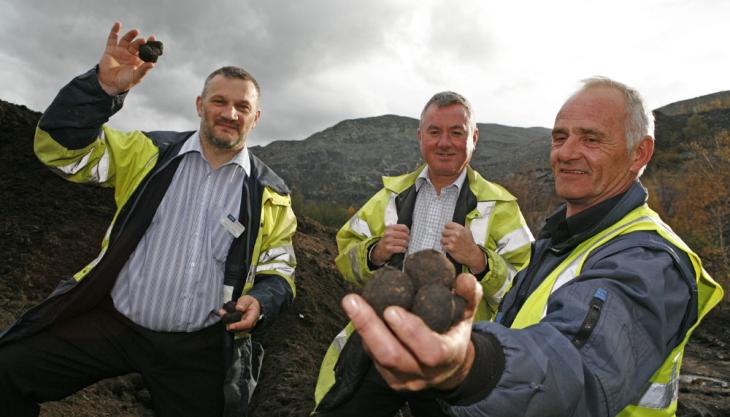Welsh landscape restoration showcase

Large-scale landscape restoration using quality compost inspires regeneration specialists
MORE than 30 representatives from Welsh local authorities and quarrying and mining companies with an interest in the restoration of landscapes affected by mineral extraction attended a free interactive showcase, hosted by Welsh Slate and WRAP Cymru at Penrhyn Quarry in Bethesda, Gwynedd, on 2 November.
Welsh Slate-owned Penrhyn Quarry is WRAP Cymru’s first large-scale landscape restoration project and forms part of WRAP’s commitment to improvement of landscapes which are affected by quarrying. The showcase demonstrated how quality compost can be used to produce sustainable, cost-effective and sensitive restoration of landscapes affected by the extractive industries.
Speakers at the workshop included Paul Mathers (pictured centre), managing director of Terra Resource Investment; Lance Jones (left) from WRAP Cymru; and Tony Heaney (right), restoration manager with Welsh Slate. All speakers discussed the benefits of using quality compost and how the material should be applied to ensure good results.
Organics project manager Lance Jones, who has been working with Welsh Slate and other extraction companies across Wales to restore quarry sites, said: ‘Topsoil is in scarce supply, and restoring land used for mineral extraction is often expensive and difficult, carrying a number of risks.
‘Operators have, in the past, tried to make use of the left-over soils on site but this material is often unsuitable because its organic nutrient content and overall structure is depleted, meaning that very little vegetation can grow.
‘Our demonstrator project at the Welsh Slate Penrhyn Quarry is just one example of how blending quarry waste with small quantities of quality green compost can not only successfully restore mineral workings, but could also deliver significant cost savings when compared with more traditional soil import or fertilized hydroseed treatments.’
Tony Heaney said: ‘WRAP first approached us six months ago after taking interest in our restoration techniques. Our techniques involved mixing quality organic compost with slate waste to create islands of plants across the quarry which helped to restore the land to what it was nearly 300 years ago.
‘Working with WRAP has meant that we now have access to the best restoration methods and techniques available which can inject life into quarry land. Land restoration using PAS100 compost is really impressive and has worked exceptionally well to bring the land at Penrhyn Quarry to life. The event was an excellent way to demonstrate to delegates just how effective the use of this compost can be.’
The interactive site visit demonstrated some techniques outlined in WRAP’s Good Practice Guide for landscape and regeneration, an evidence-based online resource to help both new and regular users of PAS 100 quality compost understand how best to use the material in practice.
The guide (available free at: www.wrap.org.uk/landscapegpg) is aimed at those in the landscaping and regeneration sectors, including those working for local authorities, private quarrying and mining companies, as well as civil engineers and sustainable builders. It was written after four years of research and explains how BSI PAS 100 quality compost can aid restoration, reclamation and the improvement of land, as well as in many building and civil engineering projects.



